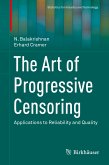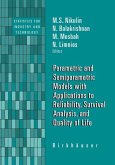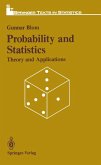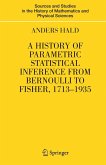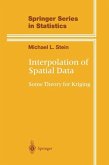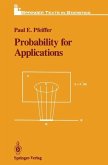72,95 €
72,95 €
inkl. MwSt.
Sofort per Download lieferbar

36 °P sammeln
72,95 €
Als Download kaufen

72,95 €
inkl. MwSt.
Sofort per Download lieferbar

36 °P sammeln
Jetzt verschenken
Alle Infos zum eBook verschenken
72,95 €
inkl. MwSt.
Sofort per Download lieferbar
Alle Infos zum eBook verschenken

36 °P sammeln
- Format: PDF
- Merkliste
- Auf die Merkliste
- Bewerten Bewerten
- Teilen
- Produkt teilen
- Produkterinnerung
- Produkterinnerung

Bitte loggen Sie sich zunächst in Ihr Kundenkonto ein oder registrieren Sie sich bei
bücher.de, um das eBook-Abo tolino select nutzen zu können.
Hier können Sie sich einloggen
Hier können Sie sich einloggen
Sie sind bereits eingeloggt. Klicken Sie auf 2. tolino select Abo, um fortzufahren.

Bitte loggen Sie sich zunächst in Ihr Kundenkonto ein oder registrieren Sie sich bei bücher.de, um das eBook-Abo tolino select nutzen zu können.
With its accessible style and concrete examples, the book is an essential resource and guide to the use of progressive censoring methodology in applied statistics and statistical reliability testing. Advanced students, practitioners and professionals will find it a useful guide to understanding and using progressive censoring concepts and methods in their work.
- Geräte: PC
- ohne Kopierschutz
- eBook Hilfe
- Größe: 30.4MB
Andere Kunden interessierten sich auch für
![The Art of Progressive Censoring (eBook, PDF) The Art of Progressive Censoring (eBook, PDF)]() N. BalakrishnanThe Art of Progressive Censoring (eBook, PDF)72,95 €
N. BalakrishnanThe Art of Progressive Censoring (eBook, PDF)72,95 €![Parametric and Semiparametric Models with Applications to Reliability, Survival Analysis, and Quality of Life (eBook, PDF) Parametric and Semiparametric Models with Applications to Reliability, Survival Analysis, and Quality of Life (eBook, PDF)]() Parametric and Semiparametric Models with Applications to Reliability, Survival Analysis, and Quality of Life (eBook, PDF)80,95 €
Parametric and Semiparametric Models with Applications to Reliability, Survival Analysis, and Quality of Life (eBook, PDF)80,95 €![Introduction to Reliability Analysis (eBook, PDF) Introduction to Reliability Analysis (eBook, PDF)]() Shelemyahu ZacksIntroduction to Reliability Analysis (eBook, PDF)72,95 €
Shelemyahu ZacksIntroduction to Reliability Analysis (eBook, PDF)72,95 €![Probability and Statistics (eBook, PDF) Probability and Statistics (eBook, PDF)]() Gunnar BlomProbability and Statistics (eBook, PDF)60,95 €
Gunnar BlomProbability and Statistics (eBook, PDF)60,95 €![A History of Parametric Statistical Inference from Bernoulli to Fisher, 1713-1935 (eBook, PDF) A History of Parametric Statistical Inference from Bernoulli to Fisher, 1713-1935 (eBook, PDF)]() Anders HaldA History of Parametric Statistical Inference from Bernoulli to Fisher, 1713-1935 (eBook, PDF)68,95 €
Anders HaldA History of Parametric Statistical Inference from Bernoulli to Fisher, 1713-1935 (eBook, PDF)68,95 €![Interpolation of Spatial Data (eBook, PDF) Interpolation of Spatial Data (eBook, PDF)]() Michael L. SteinInterpolation of Spatial Data (eBook, PDF)104,95 €
Michael L. SteinInterpolation of Spatial Data (eBook, PDF)104,95 €![Probability for Applications (eBook, PDF) Probability for Applications (eBook, PDF)]() Paul E. PfeifferProbability for Applications (eBook, PDF)40,95 €
Paul E. PfeifferProbability for Applications (eBook, PDF)40,95 €-
-
-
With its accessible style and concrete examples, the book is an essential resource and guide to the use of progressive censoring methodology in applied statistics and statistical reliability testing. Advanced students, practitioners and professionals will find it a useful guide to understanding and using progressive censoring concepts and methods in their work.
Dieser Download kann aus rechtlichen Gründen nur mit Rechnungsadresse in A, B, BG, CY, CZ, D, DK, EW, E, FIN, F, GR, HR, H, IRL, I, LT, L, LR, M, NL, PL, P, R, S, SLO, SK ausgeliefert werden.
Produktdetails
- Produktdetails
- Verlag: Birkhäuser Boston
- Seitenzahl: 248
- Erscheinungstermin: 6. Dezember 2012
- Englisch
- ISBN-13: 9781461213345
- Artikelnr.: 44194847
- Verlag: Birkhäuser Boston
- Seitenzahl: 248
- Erscheinungstermin: 6. Dezember 2012
- Englisch
- ISBN-13: 9781461213345
- Artikelnr.: 44194847
- Herstellerkennzeichnung Die Herstellerinformationen sind derzeit nicht verfügbar.
1 Introduction.- 1.1 The Big Picture.- 1.2 Genesis.- 1.3 The Need for Progressive Censoring.- 1.4 A Relatively Unexplored Idea.- 1.5 Mathematical Notations.- 1.6 A Friendly Note.- 2 Mathematical Properties of Progressively Type-II Right Censored Order Statistics.- 2.1 General Continuous Distributions.- 2.2 The Exponential Distribution: Spacings.- 2.3 The Uniform Distribution: Ratios.- 2.4 The Pareto Distribution: Ratios.- 2.5 Bounds for Means and Variances.- 3 Simulational Algorithms.- 3.1 Introduction.- 3.2 Simulation Using the Uniform Distribution.- 3.3 Simulation Using the Exponential Distribution.- 3.4 General Progressively Type-II Censored Samples.- 4 Recursive Computation and Algorithms.- 4.1 Introduction.- 4.2 The Exponential Distribution.- 4.3 The Doubly Truncated Exponential Distribution.- 4.4 The Pareto Distribution and Truncated Forms.- 4.5 The Power Function Distribution and Truncated Forms.- 5 Alternative Computational Methods.- 5.1 Introduction.- 5.2 Formulas in Terms of Moments of Usual Order Statistics.- 5.3 Formulas in the Case of Symmetric Distributions.- 5.4 Other Relations for Moments.- 5.5 First-Order Approximations to the Moments.- 6 Linear Inference.- 6.1 One-Parameter (Scale) Models.- 6.2 Two-Parameter (Location-Scale) Models.- 6.3 Best Linear Invariant Estimation.- 7 Likelihood Inference: Type-I and Type-II Censoring.- 71. Introduction.- 7.2 General Continuous Distributions.- 7.3 Specific Continuous Distributions.- 8 Linear Prediction.- 8.1 Introduction.- 8.2 The Exponential Case.- 8.3 Case of General Distributions.- 8.4 A Simple Approach Based on BLUEs.- 8.5 First-Order Approximations to BLUPs.- 8.6 Prediction Intervals.- 8.7 Illustrative Examples.- 9 Conditional Inference.- 9.1 Introduction.- 9.2 Inference for Location and Scale Parameters.- 9.3 Inference for Quantiles and Reliability and Prediction Intervals.- 9.4 Results for Extreme Value Distribution.- 9.5 Results for Exponential Distribution.- 9.6 Illustrative Examples.- 9.7 Results for Pareto Distribution.- 10 Optimal Censoring Schemes.- 10.1 Introduction.- 10.2 The Exponential Distribution.- 10.3 The Normal Distribution.- 10.4 The Extreme Value Distribution.- 10.5 The Extreme Value (II) Distribution.- 10.6 The Log-Normal Distribution.- 10.7 Tables.- 11 Acceptance Sampling Plans.- 11.1 Introduction.- 11.2 The Exponential Distribution.- 11.3 The Log-Normal Distribution.- Author Index.
1 Introduction.- 1.1 The Big Picture.- 1.2 Genesis.- 1.3 The Need for Progressive Censoring.- 1.4 A Relatively Unexplored Idea.- 1.5 Mathematical Notations.- 1.6 A Friendly Note.- 2 Mathematical Properties of Progressively Type-II Right Censored Order Statistics.- 2.1 General Continuous Distributions.- 2.2 The Exponential Distribution: Spacings.- 2.3 The Uniform Distribution: Ratios.- 2.4 The Pareto Distribution: Ratios.- 2.5 Bounds for Means and Variances.- 3 Simulational Algorithms.- 3.1 Introduction.- 3.2 Simulation Using the Uniform Distribution.- 3.3 Simulation Using the Exponential Distribution.- 3.4 General Progressively Type-II Censored Samples.- 4 Recursive Computation and Algorithms.- 4.1 Introduction.- 4.2 The Exponential Distribution.- 4.3 The Doubly Truncated Exponential Distribution.- 4.4 The Pareto Distribution and Truncated Forms.- 4.5 The Power Function Distribution and Truncated Forms.- 5 Alternative Computational Methods.- 5.1 Introduction.- 5.2 Formulas in Terms of Moments of Usual Order Statistics.- 5.3 Formulas in the Case of Symmetric Distributions.- 5.4 Other Relations for Moments.- 5.5 First-Order Approximations to the Moments.- 6 Linear Inference.- 6.1 One-Parameter (Scale) Models.- 6.2 Two-Parameter (Location-Scale) Models.- 6.3 Best Linear Invariant Estimation.- 7 Likelihood Inference: Type-I and Type-II Censoring.- 71. Introduction.- 7.2 General Continuous Distributions.- 7.3 Specific Continuous Distributions.- 8 Linear Prediction.- 8.1 Introduction.- 8.2 The Exponential Case.- 8.3 Case of General Distributions.- 8.4 A Simple Approach Based on BLUEs.- 8.5 First-Order Approximations to BLUPs.- 8.6 Prediction Intervals.- 8.7 Illustrative Examples.- 9 Conditional Inference.- 9.1 Introduction.- 9.2 Inference for Location and Scale Parameters.- 9.3 Inference for Quantiles and Reliability and Prediction Intervals.- 9.4 Results for Extreme Value Distribution.- 9.5 Results for Exponential Distribution.- 9.6 Illustrative Examples.- 9.7 Results for Pareto Distribution.- 10 Optimal Censoring Schemes.- 10.1 Introduction.- 10.2 The Exponential Distribution.- 10.3 The Normal Distribution.- 10.4 The Extreme Value Distribution.- 10.5 The Extreme Value (II) Distribution.- 10.6 The Log-Normal Distribution.- 10.7 Tables.- 11 Acceptance Sampling Plans.- 11.1 Introduction.- 11.2 The Exponential Distribution.- 11.3 The Log-Normal Distribution.- Author Index.

